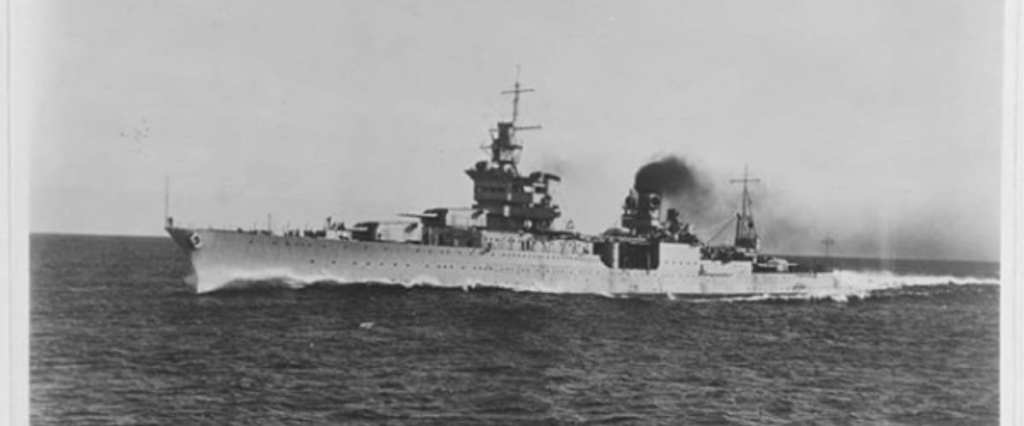When you think of shark attacks, you probably imagine surfers, divers, or other people who choose to be in the water with the giant predators when they’re mistaken for food – but the worst shark attack in history is actually the result of an event far more sinister.
And in this case, the sharks weren’t making mistakes – the humans beings treading water were, in fact, their intended prey.
The USS Indianapolis had delivered components of the atomic bomb that would later level Hiroshima before leaving Guam. It sailed alone toward the Leyte Gulf in the Philippines, where it was supposed to meet the USS Idaho and prepare for an invasion of Japan.
https://www.instagram.com/p/Brc3zJbHiHz/
A day later, shortly after midnight, a Japanese torpedo ripped the ship in half.
It sank in under 12 minutes, sending the 900 survivors (of 1196 crew) into the water.
There weren’t enough life rafts to hold everyone but there were life vests to go around, and as the men formed groups and began going through rations and trying to maintain some kind of order, they surely believed rescue would come – and soon.
They were wrong.
Instead, the sharks appeared, likely drawn by the blood and bodies in the water, ready to attack live victims. Their reported aggression leads most historians and experts to believe the sharks in question were oceanic whitetips – a particularly aggressive species that lives and feeds in open water.
https://www.instagram.com/p/B0pHmd2ndJr/
The sailors did what they could, pushing the men who died away from the groups to draw sharks and moving away from anyone with an open or bleeding wound. The first person to open a can of SPAM paid the ultimate price, and the rest of the meat rations were tossed after that harrowing spectacle.
Days passed and the Navy did nothing, believing that reports of the ships sinking had been planted in an attempt to draw rescue ships into open water. The survivors dwindled, dying from thirst, heat, drinking seawater and suffering from salt poisoning. Those who were not in their right minds dragged healthy men into the water when they jumped, dooming even more to the depths.
https://www.instagram.com/p/BY6Zth5lVb4/
After four-plus days in the water, a Navy pilot spotted the survivors and radioed for help, and when a second plane arrived, it dropped rafts and supplies before landing and attempting to gather the men most at risk – disobeying orders in the process.
Twelve hours later, the USS Doyle arrived and pulled 317 men from the water – nearly 600 had perished in the four days it took the Navy to respond. Not all of them were killed by sharks, with salt poisoning and exposure claiming lives, along with lack of access to clean water, but none of those men would have had to die had the Navy been quick to send rescue teams after the attack.
https://www.instagram.com/p/B0pgaWEp6Ie/
Lessons learned? Don’t expect that help will be there soon, and don’t mess with the oceanic whitetip shark.
And don’t eat SPAM, but you probably already figured that out on your own.
Also also, Nic Cage starred in a 2016 movie about the disaster called USS Indianapolis: Men of Courage.






